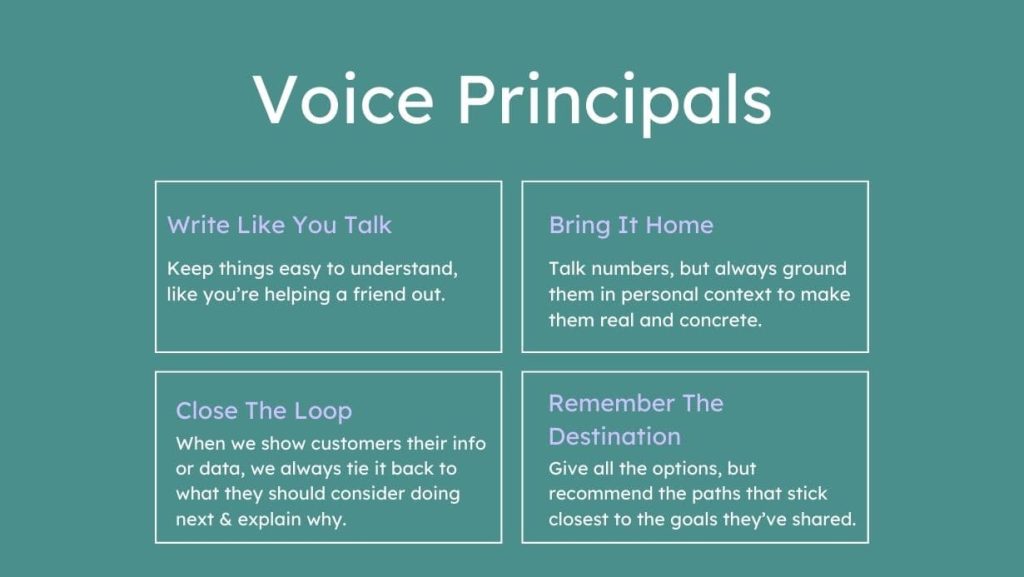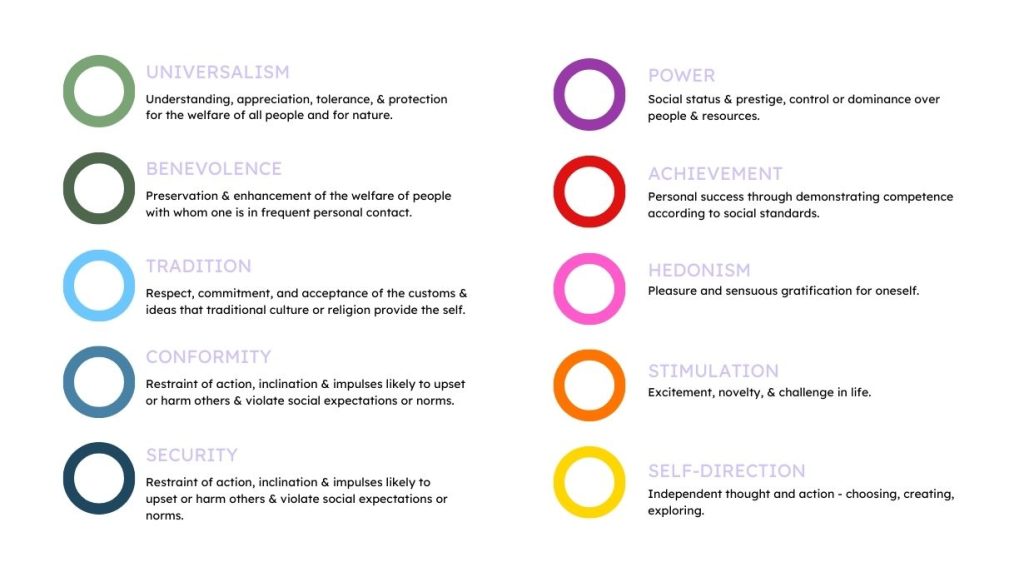As the digital age progresses, an ever-growing number of people have become more intentional about who they do business with and what they support. In fact, recent research has shown that 82% of shoppers prefer a consumer brand’s values to align with their own, and if there’s a value mismatch, 39% of them would permanently boycott the brands at fault – even if that happens to be their favorite brand!
What does this mean for you? It means that your website needs to be more than a simple storefront. It needs to communicate who you are, what values you hold dear, and how these values translate into tangible products and services. Gone are the days of generic web presence. It’s time to create a website that reflects the real you and your values.
But since many of us are accustomed to the more straightforward process of a traditional website, how do we start building an online presence that communicates our values? Here’s how!
What Are Personal Values?
Before developing a website that reflects your values, it’s important to understand what personal values are and how they can be expressed through website design. We all have different beliefs and standards that guide our decisions on how we conduct ourselves in the world. These internal morals are known as personal values. They’re like an invisible force driving us toward what we want and how we want to live our lives.
For instance, someone might value integrity and honesty, while another may be more focused on creativity and adventure. These personal values can then be expressed in the design of your website. However, your values should actually be embedded in your business and operations, not just in your website design.
How to Communicate Your Personal Values Through Your Website
The easy answer is to be honest and upfront about who you are. But there is a bit more to it than that. Here are some tips on how to effectively communicate your values through your website:
1. Start With Branding
The first step to building a website that reflects your personal values is to create an effective branding strategy. This involves creating a logo, color palette, font choices, and more. Keep in mind that this is the baseline for your website—you’ll be adding more content and visuals to further communicate who you are as a company.
However, branding is what gives the first impression, so every element should be chosen with intention. For example, if adventure is a core value of yours, orange is one of the best colors to use as it symbolizes freedom, movement, and exploration.

The same applies to typography – if one of your core values is innovation, choosing a font like Times New Roman won’t make sense. Instead, opt for a modern font like Futura to reflect your values and make your website more appealing.
Branding elements may seem small, but they make a huge difference in telling your story.
2. Determine Your Brand Voice
Branding is just one part of the puzzle. If your branding elements are the visual aspect of your website, then the brand voice is what will give it life. Your tone of voice should align with your values and how you want to communicate them.
For example, if your values include joy and positivity, you’ll want to create content that reflects this in a light-hearted yet informative way. On the other hand, if your values are more serious and professional in nature, your content should be more formal and to the point.
To make sure that your brand voice is consistent across all platforms, create a brand voice guide and use it as a reference whenever you’re creating content. This guide should include:
- A list of words and phrases to use or avoid when crafting content.
- Guidelines for grammar, punctuation, and tone (for instance, whether to use first or third person).
- A list of your values and what they mean in the context of your company and its culture.
- Examples of how your values should be portrayed.
- Formatting rules for content such as website pages, blog posts, and social media posts.
- Any other rules that encompass how your brand should be speaking to its audience.

This will ensure that even if different people create content for your website and social platforms, everything will still be in line with your established brand voice and values. You don’t want to be sending mixed messages.
3. Identify & Share Your Mission
Your website should also clearly communicate your mission. This is the purpose behind what you do and how it aligns with your values. Whether it’s helping people lead sustainable lifestyles or providing the best customer service around, make sure to include this on your site.
When crafting your mission statement, be sure to use words that reflect your values. For example, if your company is passionate about environmental protection, include words like “sustainability” and “green initiatives” in your mission statement. Similarly, if you value transparency, use words like “open” and “honest”.
Your mission should be prominently displayed on your website—ideally, with visuals to help communicate it. This way, everyone who visits can get a feel for what you’re all about and why you do what you do.
Pro Tip: For your mission statement to come off as authentic, make sure it reflects what your company actually does. If there’s even a hint of insincerity, customers won’t believe in your mission and will be less likely to trust you. So after writing your mission statement, talk about the “how” – how do you actually go about fulfilling your mission? This will make it more tangible and relatable to potential customers.
4. Create an “Our Values” Page or Section
Sometimes, the best way to communicate your values is to create a page or section on your website dedicated specifically to that purpose. This will be the place where customers can go if they want to learn more about what you stand for and why.
This page should include descriptions of each value and how it ties into your business, as well as case studies of how you’ve implemented it in the past.
For instance, if “empathy” is an important value for your brand, include stories of how you’ve gone the extra mile to make customers feel cared for. Better yet, feature employee testimonials expressing how they live out that value both at work and in their personal lives.
In addition to helping customers connect with your values, this page will also be a great place to highlight your company culture. Showcase photos of employees, such as team outings or volunteer activities, so people can get a sense of what it’s like to work for your organization.
The “Our Values” page should be featured prominently on your website—ideally, in a way that’s easily accessible from every page. This will enable customers to learn more about your values as they navigate through the site and make it easy to reference whenever needed.
By creating a page dedicated to your values, you’ll be able to effectively communicate what makes your brand unique and why customers should choose you. Your values will come alive, and visitors will get an authentic feel for who you are and what you stand for.
5. Tell Your Story!
If people love a brand story, 55% will be more likely to buy the product in the future, 44% will share the story, and 15% will buy the product immediately.
That’s why it’s important to tell your story—whether it’s on your website, social media channels, or both. People want to know about the history of your company and how you got to where you are today. Showcase the highs and lows of your journey so far, as well as any successes you’ve had.

While you develop your story, make sure that it highlights the values and mission of your company. Show how each step along the way reflects what you believe in and how those beliefs translate into action.
Once you’ve crafted your story, find creative ways to share it with customers. You could write a blog post about it or create a video capturing your brand’s spirit. That’s on top of featuring it on your “About Us” page or other website sections. Whatever you choose, make sure it’s easily accessible and easy to understand.
By telling your story, you’ll give customers an intimate look at what makes your company unique and why they should choose you. Your values will become more tangible, which will help forge deeper connections with customers and build long-term loyalty.
Pro Tip: The StoryBrand Framework is a great tool to help you craft your story in a compelling way. Check it out if you need some guidance!
6. Demonstrate Your Values in Action
Of course, it’s not enough to just talk about your values. You need to demonstrate them in action. This is an opportunity to show customers that you’re actually living up to what you say and being true to who you are as a brand.
When it comes to demonstrating your values, it’s an ongoing process. Whether it’s in how you interact with customers or how your employees conduct themselves, make sure they’re reflecting the values of your brand.
You should also consider partnering with organizations that are aligned with your mission and values. Not only will this help raise awareness for those causes, but it can also create great opportunities to demonstrate your commitment to those values.
Finally, ensure that your customers know all the ways you’re living up to your values. Through your website, social media accounts, or other channels, be sure to highlight how you’re taking action and making a difference in the world. Case studies and customer stories on your website can be great ways to showcase this.
When customers can clearly see how your values are being put into practice, they’ll be more likely to trust and engage with your brand.
7. Use Different Multimedia to Communicate Your Values
When it comes to communicating your values, don’t just rely on words. Take advantage of different multimedia formats like videos, photos, and illustrations to make your message more impactful and engaging.
For example, you could create an illustrated timeline of your brand’s history. You could also use photos of you and your team in action to showcase how you’re living up to your values. Videos can also be great for this—you could create short clips that tell your brand’s story or have different team members talk about what they believe in.
These visual elements will add depth and richness to your message, helping customers better understand and remember your values.
8. Engage Customers With Content That Reflects Your Values
The final step is to create content that reflects your values. This could include blog posts, podcasts, videos, and other digital assets that bring your values to life in a meaningful way.
For example, if you value environmental sustainability, write about what you’re doing as a brand to reduce your carbon footprint. Or, if one of your core values is customer feedback, create a video series that features interviews with customers about how your product or service has made a difference in their lives.
By creating content that embodies your values, you’ll be able to engage customers on an even deeper level and further strengthen their connection with your brand.
In Conclusion: Let Your Values Shine Through
At the end of the day, communicating your values is about creating meaningful connections with customers and showcasing who you are as a brand. But it all starts with understanding what matters most to you and how you can best communicate that message to your customers. Once you have that figured out, the sky’s the limit.
You have all the liberty to get creative with how you share your values. Whether it’s through visuals, multimedia, or content, there are plenty of opportunities to make sure that your values stand out and shine through your website. Your brand will thank you for it.
If you need help communicating your values, get in touch. At ShiftWeb, we not only help with the website development process, but we can also help you create an effective strategy for communicating your values and even do the copywriting for you. Contact us today to learn more!



